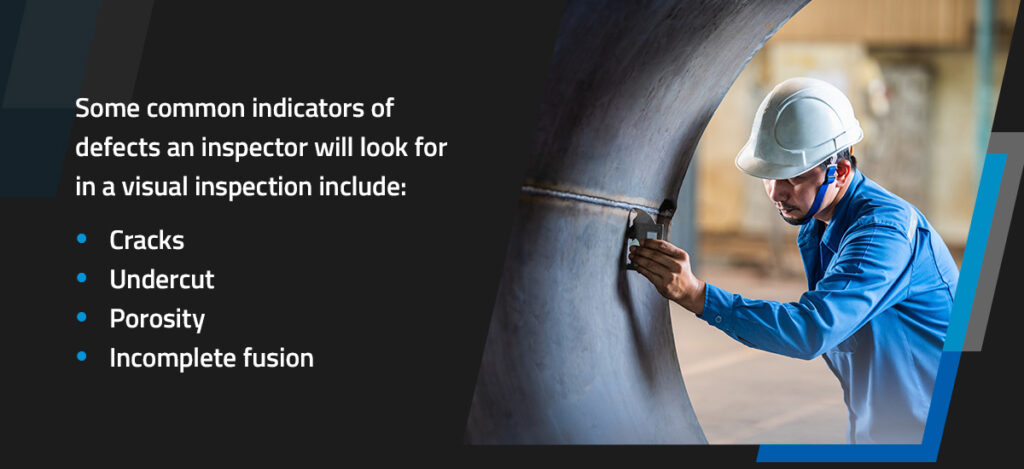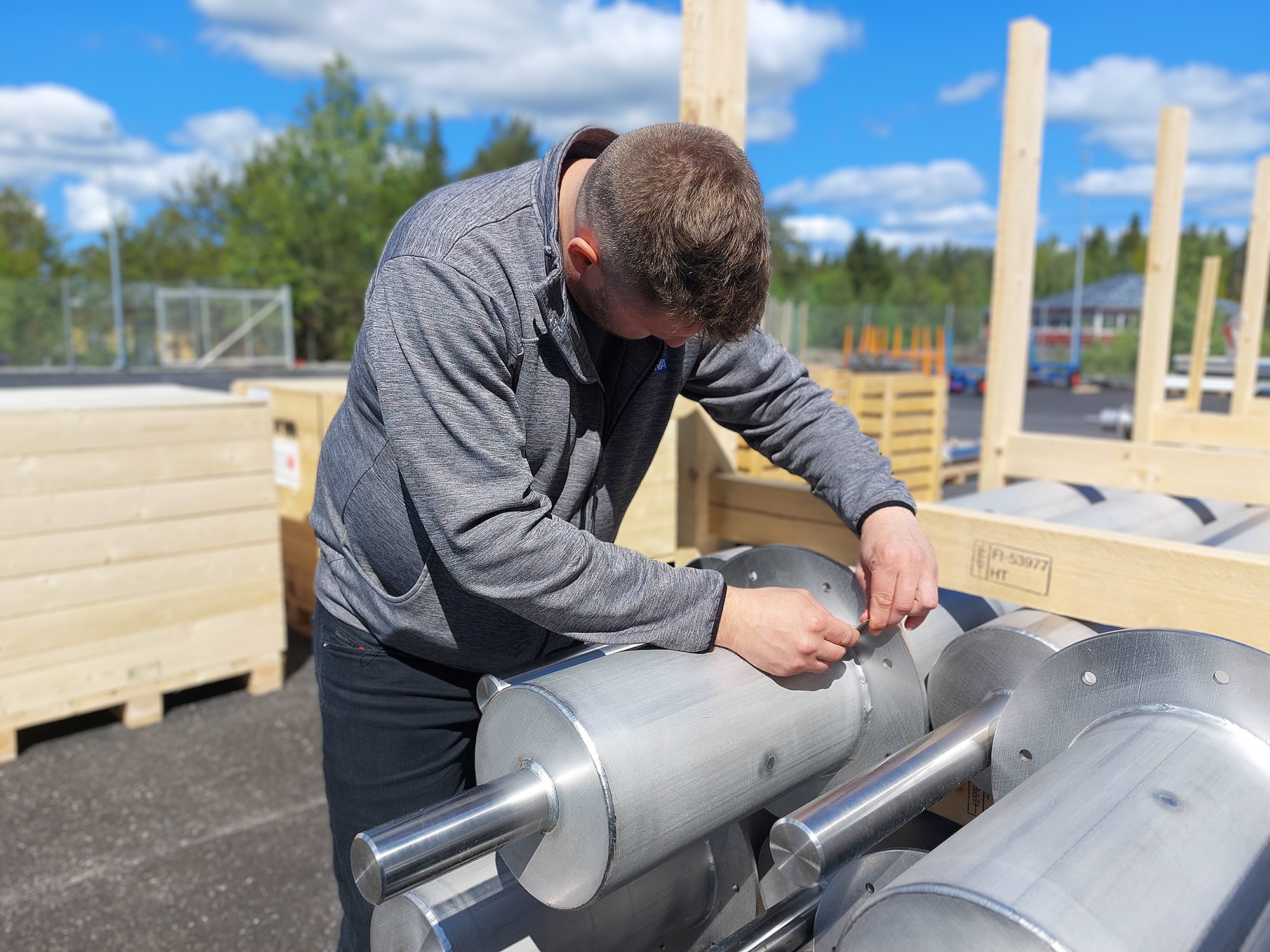Crucial Tips for Effective Welding Inspection Racine Services
Crucial Tips for Effective Welding Inspection Racine Services
Blog Article
Cutting-edge Methods to Fillet Weld Examination and Screening: Enhancing Weld Quality and Compliance Criteria
In the world of welding, the quality and honesty of fillet welds play a critical duty in making certain the structural sturdiness and integrity of different industrial components. With the constant drive for improved effectiveness and conformity with stringent requirements, the exploration of innovative strategies to fillet weld assessment and testing has actually become important. As industries develop, the typical methods may no more be adequate in meeting the needs of modern welding applications. By welcoming innovative innovations and methodologies, a brand-new perspective of possibilities arises in the realm of weld high quality assessment and adherence to compliance standards.
Advanced Non-Destructive Testing Approaches
Utilizing cutting edge technologies, progressed non-destructive screening approaches play a crucial duty in ensuring the integrity and top quality of fillet welds. These approaches, such as phased array ultrasonic screening (PAUT) and magnetic fragment testing (MPT), offer detailed understandings into the weld's internal structure without causing any damages to the product. PAUT, as an example, makes use of several ultrasonic elements to inspect the weld from different angles, providing a detailed visualization of potential issues like absence of fusion or fractures.
Likewise, MPT works in spotting surface-breaking flaws by applying an electromagnetic field and iron fragments to the weld location. This method is especially useful for identifying interruptions that may jeopardize the weld's toughness. By using these innovative non-destructive screening techniques, weld assessors can precisely evaluate the quality of fillet welds, guaranteeing compliance with industry requirements and regulations. The capability to detect flaws early not just enhances weld top quality however also prevents costly rework or failures in architectural honesty, highlighting the relevance of these cutting-edge testing techniques in welding examinations.
Robotics and Automation in Examination
The integration of robotics and automation has actually transformed the assessment process for fillet welds, boosting performance and accuracy in quality analysis. Robotics offer accurate control and repeatability in examining welds, guaranteeing regular and trustworthy results. Automated systems can be configured to adhere to certain examination courses, guaranteeing complete insurance coverage of welds and reducing the danger of human error.
Robotic inspection systems geared up with advanced sensors can detect and determine weld attributes with high accuracy, offering thorough information for evaluation. These systems can determine issues such as cracks, lack of blend, and porosity, allowing punctual corrective activities to be taken. Additionally, robotics and automation enable real-time information collection and evaluation, giving prompt feedback to operators and promoting fast decision-making procedures.
Moreover, using robotics and automation in fillet weld examination improves general efficiency by reducing examination times and increasing inspection throughput. By improving the assessment process, suppliers can guarantee weld top quality and conformity criteria are met efficiently, eventually resulting in set you back savings and improved product top quality.
Using Artificial Intelligence for Evaluation
Artificial knowledge plays a critical duty in enhancing the performance and accuracy of evaluation in fillet weld examination procedures. AI formulas can swiftly process large quantities of information from weld inspections, spotting problems or inconsistencies that might be testing to identify with the naked eye - Welding Inspection Racine.
Moreover, AI systems can discover from previous assessment information, constantly boosting their capacity to recognize possible defects and discrepancies in fillet welds. This adaptive understanding capability improves the total quality control process, minimizing the chance of human mistake and ensuring that welds fulfill the needed requirements. By incorporating expert system into fillet weld analysis, markets can accomplish greater degrees of performance, uniformity, and conformity in their inspection practices.
Portable Tools for On-Site Evaluation
 Enhancing field evaluation effectiveness, the fostering of portable devices reinvents on-site evaluation processes for fillet welds. These devices use flexibility and ease, enabling examiners to perform comprehensive assessments in different places, consisting of remote or difficult atmospheres. Mobile tools such as ultrasonic testing gadgets, magnetic particle assessment tools, and electronic radiography systems supply real-time information and high-resolution imaging abilities, allowing quick decision-making and immediate feedback on weld quality.
Enhancing field evaluation effectiveness, the fostering of portable devices reinvents on-site evaluation processes for fillet welds. These devices use flexibility and ease, enabling examiners to perform comprehensive assessments in different places, consisting of remote or difficult atmospheres. Mobile tools such as ultrasonic testing gadgets, magnetic particle assessment tools, and electronic radiography systems supply real-time information and high-resolution imaging abilities, allowing quick decision-making and immediate feedback on weld quality.One substantial benefit of mobile tools is their capacity to simplify examination treatments, minimizing downtime and improving overall performance. Assessors can quickly carry these tools to different work websites, removing the requirement for carrying heavy equipment or parts to off-site facilities. Additionally, the mobility of these tools advertises cost-effectiveness by lessening transportation expenditures and increasing Bonuses assessment timelines.
Additionally, using mobile tools for on-site inspection advertises proactive top quality control procedures, as inspectors can without delay determine and address any type of potential welding problems or discrepancies. By integrating these innovative innovations into on-site assessment techniques, welding experts can guarantee compliance with sector standards and improve weld quality, eventually causing improved structural honesty and safety in numerous welding applications.
Integration of Data Administration Equipment
Having enhanced on-site examination processes with the application of portable tools, the following stage involves the seamless combination of data administration systems to better enhance effectiveness and information evaluation capacities in fillet weld inspection and testing. Welding Inspection Racine. By incorporating information monitoring systems right into the inspection process, companies can streamline data collection, storage, and analysis. This combination permits real-time surveillance of weld quality, immediate identification of problems, and timely decision-making to remedy any kind of problems that may develop throughout the examination procedure
Information monitoring systems play a vital duty in systematizing examination information, facilitating easy access for licensed employees, and making sure information stability and security. Via the integration of these systems, inspectors can generate comprehensive records, track historical data for trend analysis, and boost total procedure effectiveness. The integration of information monitoring systems allows seamless interaction between different stakeholders entailed in the assessment process, cultivating partnership and enhancing total high quality control measures. Inevitably, the integration of data management systems offers to elevate the criteria of fillet weld assessment and testing, making certain compliance with sector guidelines and enhancing weld high quality.
Verdict
Finally, cutting-edge approaches to fillet weld assessment and screening have dramatically enhanced weld high quality and conformity criteria. Advanced non-destructive screening methods, robotics, automation, expert system, portable tools, and information administration systems have revolutionized the way weld evaluations are conducted. By utilizing these technologies, sectors can make certain that welds fulfill the needed other quality requirements and guidelines, eventually enhancing general effectiveness and safety and security in welding procedures.

By utilizing these advanced non-destructive testing techniques, weld examiners can precisely examine the high quality of fillet welds, making sure conformity with market requirements and policies. Portable tools such as ultrasonic screening tools, magnetic bit inspection devices, and electronic radiography systems provide real-time information click reference and high-resolution imaging capacities, making it possible for fast decision-making and instant feedback on weld quality.
Having actually maximized on-site assessment processes through the application of mobile devices, the next stage entails the seamless integration of information administration systems to even more enhance performance and data analysis capacities in fillet weld assessment and testing (Welding Inspection Racine). Inevitably, the assimilation of data administration systems serves to raise the requirements of fillet weld inspection and screening, making sure compliance with sector policies and boosting weld top quality
 In conclusion, innovative approaches to fillet weld evaluation and testing have considerably enhanced weld top quality and compliance requirements.
In conclusion, innovative approaches to fillet weld evaluation and testing have considerably enhanced weld top quality and compliance requirements.Report this page